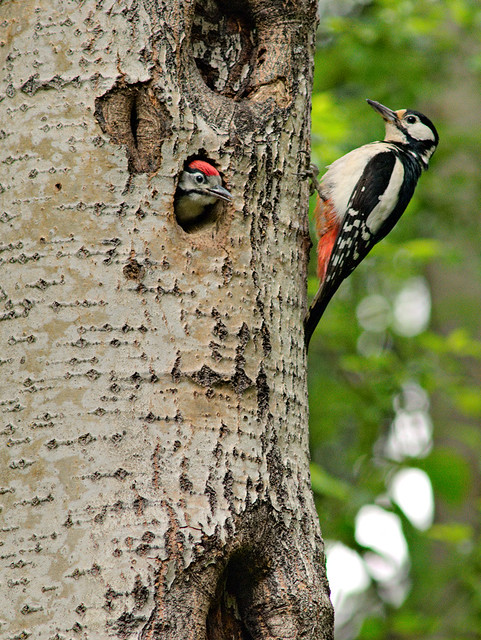However just the other day I stuck my head into a website and was greeted by news of the third variant of the Sony a7 full frame. The a7s. As soon as I read that the next version has a 12Mpix sensor and high ISO I had an Austin Powers moment...
The reason for this is the very welcome addition of high ISO performance : 409600 ISO.
I have long argued my reasons for desiring full frame on the basis of shallow normals and nicer wide angle lenses. Especially when it comes to wide angles and manual focus there is a wealth of single great lenses out there just aching to be married up to a great camera again. It is in this respect that 4/3 (micro or otherwise) and APS falls down.
My $20 Canon FD 50mm f1.4 (a beautiful lens) married up with this body would be superb. It would give the wonderful Bokeh I know it does and give better shallow DoF than the (commonly dribbled about by King Wangs subjects) Nocticron lens for micro43 (which costs nearly as much as just this body is likely to).
Assuming the actual results of this camera are good, then suddenly the 2 stops DoF advantage of micro43 disappears into the ISO haze and IBIS becomes far less significant (for stills, for video its still pretty dam good). Let me explain.
I like to take pictures with my camera, and digital has allowed me to use cameras in much lower light than I could ever have done before. Unfortunately despite this temptation there are limits imposed by the ISO. For instance: I took this shot with my GF-1 and the 14mm f2.5 pancake.
Even with f2.5 and ISO 3200 (max) the exposure was 1.6 seconds ... well out of the usefulness of IBIS (or Mega OIS...). Plus the amount of noise in the shot makes it look seriously grainy ... sometimes that works, sometimes that doesn't.
Now with this Sony things have changed, for instance:
Looking at this chart you can see that by upping the ISO from 3200 to 409,600 (God I get giddy just thinking about how high that is) you can see that I can get right up to 64th of a second exposure which is actually quite reasonable at capturing motion (no fast motion mind you) and the use of IBIS (for stills) is suddenly moot.
To me this opens up FAR FAR more photographic potential than giving me extra megapixels (which my lens won't resolve nor will I see if not using a tripod anyway).
For photographing my friends and family I totally HATE flash, its ugly (looking like a search light) and screams out to everyone in the room that you're taking photographs. Shots like my favorite shot of my niece would be rubbish with flash ...

This shot was taken during the day, but this Sony now opens up potentials for shots like this during the evenings (without looking like they were ink-jet printed onto sand).
I have argued that IBIS brings very little to my photographic table, and while it may be nice in assisting people to hand hold telephoto lenses, for normal to wide its sort of pointless. With shots like this:
Image Stabilisation brings nothing to the table (although I must say that the movement was nice and I've come to like it on occasion) as its clear that my camera technique has kept the subject sharp anyway IBIS would bring little to this image either.
Again this was at ISO 3200 and looks like a noise fest on the smaller sensor of 4/3. I would warrant that the new a7s will make much cleaner images at ISO 3200 than this, and probably much higher. Thus allow me to pick the ISO I want to capture movement or display it.
For example in that above shot the GF-1 had pixel level noise like this at (just?) 3200 ISO:
While the previous model a7 (in a shot I found on line) had pixel level noise like this @ ISO 12,800:
Which is about the same as the GF-1 at 2 stops higher ISO, so I expect that the a7s will be easily better for another 2 or more stops.
I wait with bated breath.
This does not mean I'll abandon micro4/3 as it will work with my Telephoto and Super Telephoto lenses (such as my FD300mm f4) to keep me getting the advantages of the crop factor and make my 300mm into a 600mm (which I like for nature work)

Bring it on!
















8 comments:
This argument works, as long as you accept shallower DOF for FF. For the same DOF we know that an 50/1.4 on m43 at ISO 1600 is equivalent to an 100/2.8 at ISO 6400 for equivalent DOF, exposure, AOV etc. at the same shutter speed. Of course, you can trade that in for shallower DOF, but sometimes it's not what you want (consider group shots). Downscaled to 8MP I got quite clean ISO 6400 pictures at DinA4 (ISO 25600 for a FF under equivalence). Maybe m43 sensors are at the limit know and don't offer further improvement. But when considering the jump in quality over the past years, I don't think so. I always made the error to compare my D610 with my OMD at 100%. But when printed, the difference even at higher ISO was often not that large.
The Sony has a newer sensor with very high ISO capabilities, but I guess it's not much better than the one in a Nikon D4s, which looks not that good at ISO 400k (a little better when downscaled to 12MP).
I think we have to wait and see how the still images really look like.
Anon
your trade-off principle is exactly right. As a Large Format person I'm pretty aware of it, but its good that people keep hammering that its always swings and round abouts with now "one size fits all".
On times where I want better DoF I pick the micro43 for all the reasons you mention.
There is however another point, and that is noise. When you get to 3200iso the smaller well size on micro43 leaves you with problems with signal to noise ratio that can't really be dealt with other than what amounts to selective smudging (such as wavelets).
Best Wishes
Yes, I too use both systems and use "the best of both worlds". It's much cheaper to achieve shallow DOF on FF (85mm/1.8g is 400 Euro, PanaLeica 1500 Euro!),
however working with tele-zooms is not much fun due to size and weight. The 300/f4 could really be something.
I love my FD300f4, it was great value for money at US$150 or so. They turn up on eBay in the EU from time to time too. I have removed the glass from the "drop in filter" and am currently looking at cutting a bit from a welding glass to fit in there to photograph eclipses, transits and solar flares.
There is a rumor of a new Oly micro43 300f4 lens, but I'm sure that it'll be stratospheric in price and bring me little value.
I hated my 20D for the fact that it was a brick and any reasonable wide zooms were outrageous in size.
I love backpack touring with the likes of a GH1 / GF1 and a few small primes. For my money the new 25mm f1.4 is just as useless as the EOS 50mm f1.2 was ... my travel kit is often just the Kit 14-45 and a 70mm Pentax 110 or perhaps the FD200f4 (which the newFD IF version weighs but 440g).
best wishes
PS Anon, you say:
"I always made the error to compare my D610 with my OMD at 100%. But when printed, the difference even at higher ISO was often not that large."
if you look this post of mine:
http://cjeastwd.blogspot.com/2009/05/digital-vs-film-scans-screens-and.html
I make some points about the blur which occurs in printing by such things as inkjet smatter or even paper diffusion of the laser in RA-4 laser exposed optical printing.
It certainly covers up some issues which are often exaggerated on screens.
Comparing a 1st. generation M43 sensor (GF1) to the latest Sony full frame sensor??? There are much better M43 sensors now. Wouldn't a GX7/OMD be a fairer comparison? I'm not saying my OMD is as good as full frame, but it's certainly much better than my GF1! By the way, thank you for some informative articles on your blog.
Hi Anon
"Comparing a 1st. generation M43 sensor (GF1) to the latest Sony full frame sensor??? "
well as I see it the pixel counts are similar and I do not see substantial differences in noise levels in the new sensors, only greater pixel counts giving rise to greater possibility in signal processing (aka noise reduction algorithms). When it comes to actual sensor noise things have not changed much since the 5D (as the underlying physics has not changed). We do not for instance see 2x better signal to noise ratios.
Anyway, what I was saying was that the noise in the Sony will likely be more well controlled and allow the ISO (meaning the electronic gain) to be pushed even further.
Glad that you found things interesting to read. My opinions aren't always mainstream but I do at least attempt to stimulate thinking about things differently.
:-)
That shot of the tree with the woodpeckers reminded me of that old joke - hear of the woodpecker who took an overdose of Epsom Salts? Could not hear his wood pecking from his ring barking.
Post a Comment